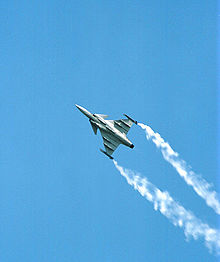
The Saab JAS 39 Gripen is a light single-engine supersonic multirole fighter aircraft manufactured by the Swedish aerospace and defence company Saab AB. The Gripen has a delta wing and canard configuration with relaxed stability design and fly-by-wire flight controls. Later aircraft are fully NATO interoperable. As of 2020, more than 271 Gripens of all models, A–F, have been delivered.

The Saab 37 Viggen is a single-seat, single-engine multirole combat aircraft designed and produced by the Swedish aircraft manufacturer Saab. It was the first canard-equipped aircraft to be produced in quantity and the first to carry an airborne digital central computer with integrated circuits for its avionics, arguably making it the most modern/advanced combat aircraft in Europe at the time of introduction. The digital central computer was the first of its kind in the world, automating and taking over tasks previously requiring a navigator/copilot, facilitating handling in tactical situations where, among other things, high speeds and short decision times determined whether attacks would be successful or not, a system not surpassed until the introduction of the Panavia Tornado into operational service in 1981.
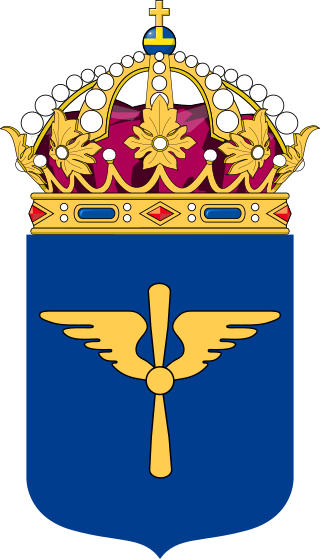
The Swedish Air Force is the air force branch of the Swedish Armed Forces.
This is a list of aviation-related events from 1996:

The Rockwell-Messerschmitt-Bölkow-Blohm X-31 is an experimental jet aircraft designed to test fighter thrust vectoring technology. It was designed and built by Rockwell and Messerschmitt-Bölkow-Blohm (MBB), as part of a joint US and German Enhanced Fighter Maneuverability program to provide additional control authority in pitch and yaw, for significantly more maneuverability than most conventional fighters. An advanced flight control system provided controlled flight at high angles of attack where conventional aircraft would stall or lose control. Two aircraft were built, of which only one has survived.

Wake turbulence is a disturbance in the atmosphere that forms behind an aircraft as it passes through the air. It includes several components, the most significant of which are wingtip vortices and jet-wash, the rapidly moving gases expelled from a jet engine.
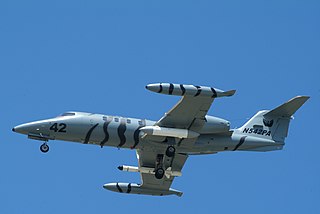
Phoenix Air Group, often just referred to as Phoenix Air, is a non-scheduled airline headquartered in Cartersville, Georgia, USA, with the city's airport serving as its base. Founded in 1978 by Army helicopter pilot and race car driver Mark Thompson, Phoenix Air operates worldwide charter flights.

Midwest Express Airlines Flight 105 was a scheduled domestic passenger flight that crashed into an open field in Milwaukee, Wisconsin shortly after taking off from General Mitchell International Airport on September 6, 1985. The airplane, a Douglas DC-9, was carrying 31 passengers and crew. None of them survived the crash.

The Learjet 25 is an American ten-seat, twin-engine, high-speed business jet aircraft manufactured by Learjet. It is a stretched version of the Learjet 24.
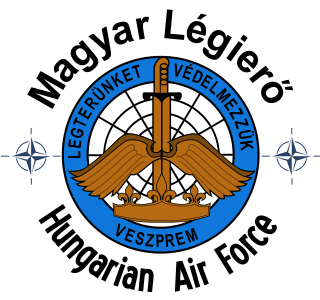
The Hungarian Air Force, is the air force branch of the Hungarian Defence Forces.

The Learjet Model 35 and Model 36 are a series of American multi-role business jets and military transport aircraft manufactured by Learjet between 1973 and 1993. When used by the United States Air Force, they carry the designation C-21A. Learjet was acquired by Bombardier Aviation in 1990 and is now a subsidiary, so the aircraft is also known as the Bombardier Learjet 35.

On October 25, 1999, a chartered Learjet 35 business jet was scheduled to fly from Orlando, Florida, United States to Dallas, Texas, United States. Early in the flight, the aircraft, which was climbing to its assigned altitude on autopilot, lost cabin pressure, and all six on board were incapacitated by hypoxia, a lack of oxygen in the brain and body. The aircraft continued climbing past its assigned altitude, then failed to make the westward turn toward Dallas over North Florida and continued on its northwestern course, flying over the southern and midwestern United States for almost four hours and 1,500 miles (2,400 km). The plane ran out of fuel over South Dakota and crashed into a field near Aberdeen after an uncontrolled descent, killing all six on board.
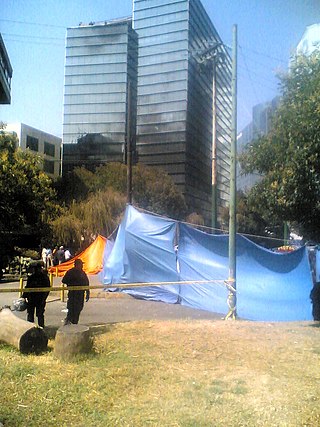
On 4 November 2008 an official Mexican Secretariat of the Interior aircraft crashed in central Mexico City at around 18:45 local time. There were sixteen fatalities—all nine people on board and seven people on the ground. The plane, a Learjet 45, was carrying Mexican Secretary of the Interior Juan Camilo Mouriño.

On 23 June 2014, a German Eurofighter Typhoon fighter jet and a Learjet 35 business jet participating in a military exercise collided mid-air over Olsberg, North Rhine-Westphalia, Germany. The Learjet subsequently crashed to the ground with the loss of both crew members on board. The Typhoon was damaged but managed to land safely.

West Air Sweden Flight 294 was a cargo flight of a Canadair CRJ200 from Oslo to Tromsø, Norway that crashed on 8 January 2016. A malfunction in one of the inertial reference units had produced erroneous attitude indications on one of the instrument displays. The crew's subsequent response resulted in spatial disorientation, leading to the loss of control of the aircraft. Both crew members on board were killed.
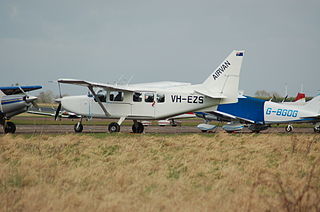
On 14 July 2019, a Gippsland GA8 Airvan crashed on a river islet in Sweden, killing all nine people on board. Structural failure of a wing is suspected as the cause of the accident. Consequently, the Gippsland GA8 Airvan was grounded by the Civil Aviation Safety Authority (CASA) in Australia, the Civil Aviation Authority (CAANZ) in New Zealand and the European Aviation Safety Agency (EASA) in the European Union. The grounding order was issued on 20 July and was due to run until 3 August, but was lifted early as CASA found there was no evidence for an unsafe condition, and the EASA said the wrecked aircraft had been exposed to aerodynamic loads beyond the limits specified in the type-certification basis.
